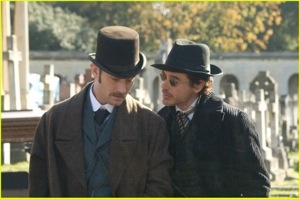This past weekend I had the privilege of working as a Production Assistant (PA) on a set for a friend’s senior thesis project. As a freshman who knew almost nothing about what actually happens on a film set, the experience was rather illuminating. As I understand it, there is a definite hierarchy that arrises from the jobs on set. The pyramid of positions works similarly to that of the government established in the middle ages. The film itself is the Kingdom, and the shoot is a battle. The monarchy must be swift, strong, and creative in order to win the war. This is going to be a stretch, so just go with it.
The Feudal System
The Director/The King
Reigning from his throne, the director works all of his loyal subjects towards the vision of a better kingdom. HIS vision of a better kingdom. All subjects are to Answer to him as moves his pawns around the veritable chess board of the set. The endgame is his endgame and we are all at his mercy. The King’s assistants are his young princes, AD 1 and 2. They do the little things the king is too busy to do like slate the scene or get all the knights and peasants to “quiet on set” while rolling. The King himself may be benevolent or tyrannical. Make no mistake, no matter how kindly he may be, the director is always the king, come hell or high water.
The Lords
His Grace, Duke of Photography
The lord of cinematography works closely to the king. He controls a great group of knights and has some say in the visual aspects of the kingdom. He may openly discuss shot setup, lightning, and movement with the King. The good Duke has much honor in the land and is a very distinguished position. As the war begins, you will find the Duke leading the charge along with the director. The duke is an integral part of battle strategy and general organization of each attack. The majority of the knights are under the Duke’s jurisdiction.
His Eminence, Earl of Sound Design
Although much of sound capture is done during shooting, the Sound Designer often has his own separate castle where much sound recording is done post shoot. The Lords position includes automated dialogue replacement, foley, sound mixing, and sometimes even score. Like the King, the Earl does much work during and after shooting due to the lengthy process of sound editing and foley.
His Greatness, Viscount of Production Design
“Everything the light touches is our kingdom” The production designer is a busy bee before and during the shoot. Every single this on a sound stage a PD had to create, or find, or steel, or something. The PD has a great amount of Knights working with props, costumes, makeup, and emergency backdrop snafus. The production designer works closely with the King before the war to go over formations and locations of the battle field. The Viscount has, in my opinion, the most stressful job.
His Loneliness, the Baron of Editing
The Editor is not always seen on set, but he has the whole weight of the kingdom on his back. The entirety of all of the action is on the editors back and there is very little hustle and bustle. However there is a very anxious King more that likely breathing down your back. You may often find the King living with the Baron for weeks at a time as he edits the crap out of all the footage. On a large production there is often more than one. However, this is film school, so really this lord is just a 21 year old in a dark room, surrounded by empty cups of coffee. Sorry to get away from the analogy.
The Knights
The DP’s Knights – Assistant Camera 1, Assistant Camera 2, Camera Operators, The Gaffer, Best Boy, Sparks, Focus Puller, Grips, and Film Loader (This person, nowadays, backs up the digital footage to a hard drive. No one uses film anymore, it’s simply Medieval… get it?)
The Sound Designer’s Knights – Sound Assistant, Sound Recordist, Boom Operator
The Production Designer‘s Knights – Art Direction, Special Effects, Makeup, Costumes, Props
The Editor’s Knight – Dubbing Editor (sometimes)
–
–
–
–
–
–
–
The Peasants
Production Assistants – We do the stupid work like fetching the actors from makeup, or stopping people from wandering on set, or getting coffee for the important people. A lot of the time we just stand there.
I hope you enjoyed this strange analogy. If nothing else… I learned how to spell the word hierarchy today.
Related articles
- Production Team – Responsibilities & Roles (jamesrudrumee2615.wordpress.com)
- Sound Design (sapicken.wordpress.com)
- 25 Cool New Things You’ll See in ‘Thor: The Dark World’ (screenrant.com)













